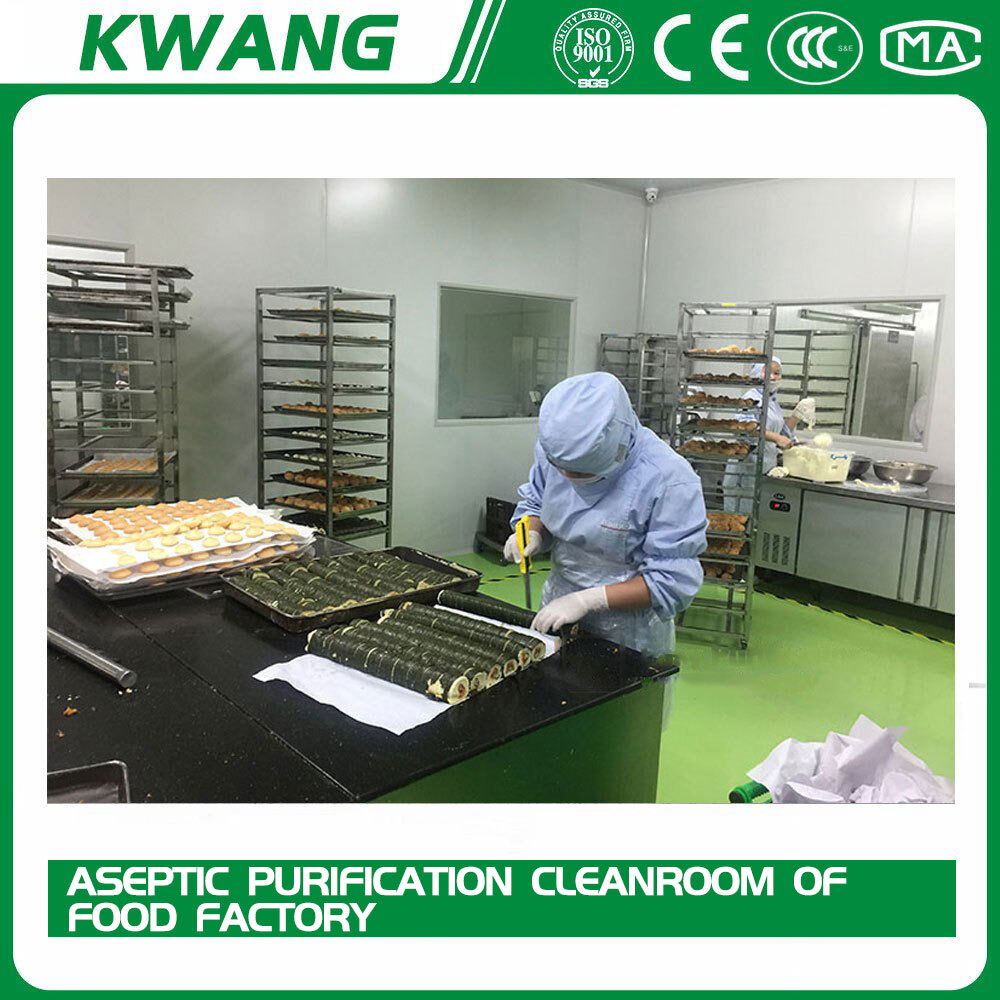
Aseptic Purification Cleanroom Of Food Factory
Cleanrooms are most commonly found in Microelectronics, Pharmaceutical, and Biotech applications. But increasingly food manufacturers are turning to Cleanroom technology to control airborne contamination and increase product shelf-life.
Food industry Cleanrooms are clearly less “clean” than those found in semiconductor or sterile pharmaceutical applications. The requirements for the Food Processing Cleanrooms vary depending on the food being produced. For example the requirements in a bakery (a dry process) are going to be less stringent than in the (wet) dairy industry. Even within the dairy industry, the requirements for fluid milk will generally be less than for yogurt or cultured milk, where bacterial activity is more intense.
Food processors will usually consider Cleanroom technology because they are concerned with the spread of bacteria, yeasts and molds that can grow in the moist conditions of process areas and are carried by air currents throughout the food plant. The aim will be to keep the air in the immediate vicinity of the food being processed free from such microbial contaminants. This can reduce or eliminate the need for pasteurization or flash freezing process stages and lead to a better, fresher food product. Process steps, in which an air exchange with the unclean, germ contaminated environment cannot be prevented, lead to:
germ contamination of foodstuffs
limitation of shelf life
reduced freshness
reduced yield
Several trends are driving increased use of cleanrooms in a variety of food preparation settings. Dietary concerns are resulting in increased emphasis on general food quality and consumption of fresh foods. At the same time, there is a strong evolution of preference away from the use of additives and preservatives.
Clean area: 2890m² (square meter)
Aseptic Purification Cleanroom Of Food Factory Project Introduction:
Food clean production workshop,from raw materials refrigeration and freezing to thawing, cooking,processing,cooling,insourcing and outsourcing all links control. Packaging materials enter the inner packaging workshop through disinfection, and personnel enter the production area after changing shoes,washing hands,disinfection and air shower.

The food industry, understandably, sets much higher hygiene standards than most other industries. It is vital that the food that we consume and market to other people is not only fresh and delicious but also safe. This is why food industry procedures are characterised by strict rules and extremely high hygiene standards. More and more food production plants opt for using cleanrooms, elevating the level of general hygiene of the whole industry.
Cleanrooms help to minimise the number of germs and fungi, making the production process and the products much cleaner and safer. This way, the shelf life of products increases, they can be stored longer and several preventive steps can be excluded from the production process, resulting in higher efficiency and higher margins. Clean rooms not only improve product quality but also simplify processes and drive margins.
Food companies benefit from cleanrooms in a variety of ways, from increased efficiency in production, through an improved shelf life to a marketing benefit, resulting from showing the clean production method on the packaging.
The main users of cleanrooms are food, meat and dairy processing plants and speciality food processing companies (gluten and lactose-free and anti-allergic foods).
The temperature in these clean rooms is strictly controlled, along with the humidity and number of particles in the air. Such an extremely sterile and controlled environment provides a safe place for food products to be produced, processed and packaged, enabling the manufacturer to increase the shelf life of the product by significantly reducing the number of germs in a cleanroom.
Cleanliness and differential pressure, reasonable layout of process flow, control of bacteria and dust, water supply and drainage, exhaust air and smoke, ground control, personnel and material control, laboratory construction, process piping, decoration materials and construction specifications control, other supporting and protection control.
As in case of any other applications, most cleanrooms used in the food industry are custom made, taken into account the space and the equipment needed to produce food products. The extremely high standards require that the manufacturer works closely with the investor, developing an optimal design for the production process.